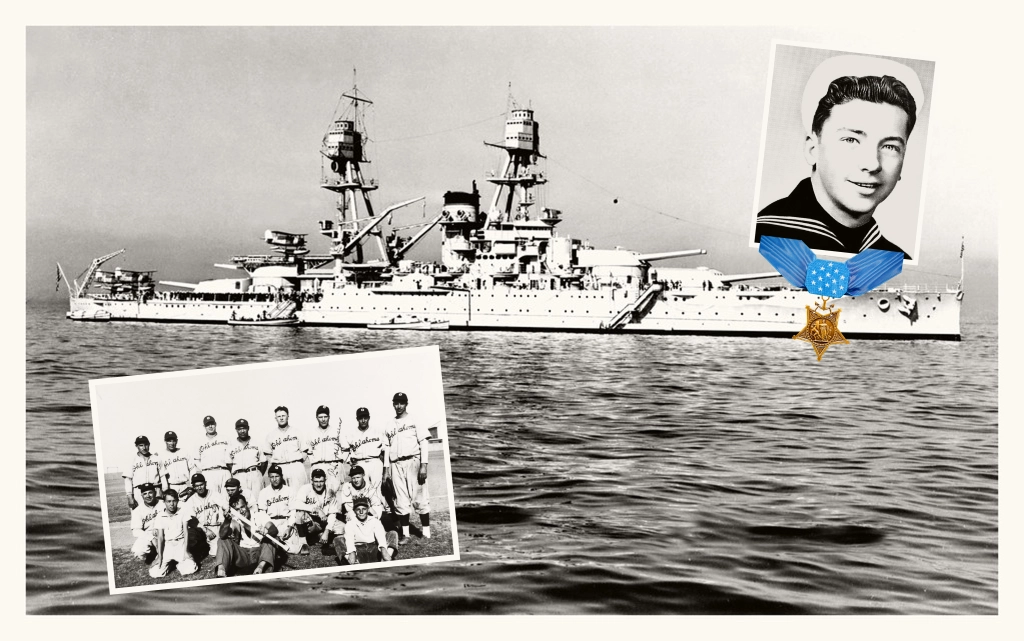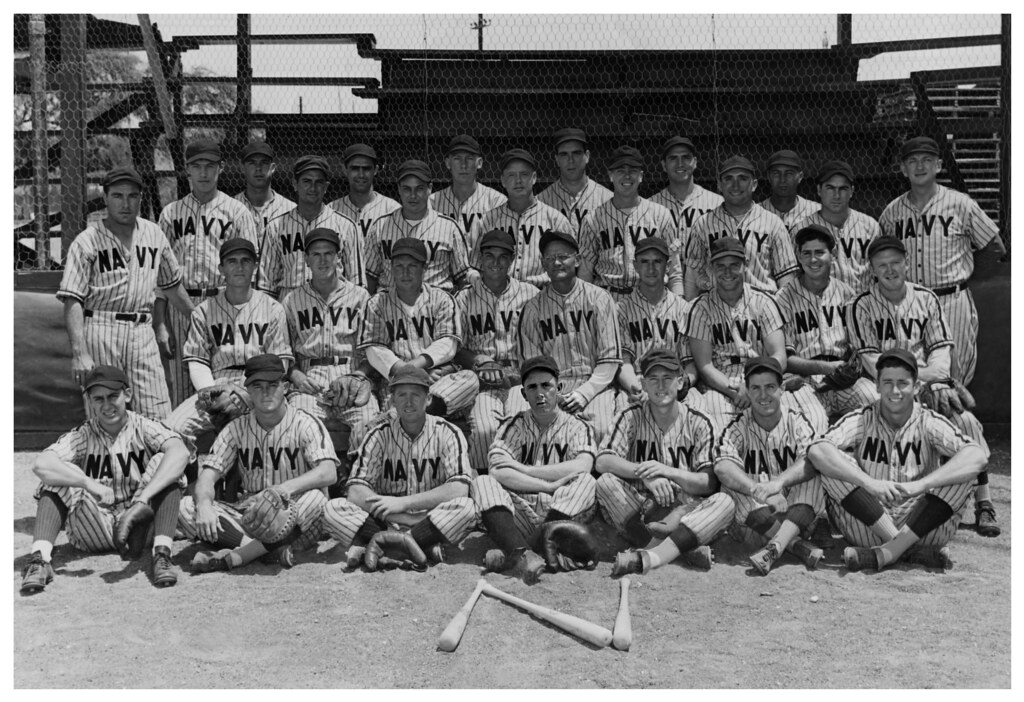So many of my articles and much of my artifact-seeking has been focused upon uniforms and photographs yet, the principle object of the sport that I am keenly interested in, the ball itself, has all but eluded my pursuit since I entered into this endeavor nearly a decade ago. The first breakthrough in my searching for authentic baseballs came at the beginning of this year with my successful acquisition of the team-signed 36th Field Artillery baseball from 1956 and still my archive of artifacts would be well-suited if it included a few more leather-clad, stitched orbs.

Roughly nine-inches in circumference and weighing roughly five ounces, baseballs have been been consistent in their size for more than a century. Until 1974, the animal skin covering of most balls (including those used by both major leagues) consisted of horsehide when the change to cowhide was made. With the exception of wartime military issued (italics for emphasis as baseballs were not government-provided) balls used by service members in league play or pick-up games could vary widely in their origins. Though I have not been able to verify alternative sources, balls (along with other equipment such as gloves, bats, catchers’ gear and uniforms) used by service members were sourced through many different means. Aside from the Baseball Fund during both world wars, balls could be obtained directly from sporting goods stores, government procurement or sent to the players from family members on the homefront.

The balls that were provided during WWII via the Baseball Equipment Fund ( commencing with fund-raising via the 1942 season’s Major League All-Star Game held at New York’s Polo Grounds) were manufactured by the Rawlings Sporting Goods Company and marked accordingly with the manufacturer’s standard stampings along with the unique and easily recognizable Baseball Fund stamps. Unsurprisingly with game usage, the stamps would be diminished as they were rubbed off from continued contact with glove-leather, bat-impact along with striking and skidding across various types of field surfaces. Locating a ball with the markings intact is not unheard of however I have only ever seen one listing of a ball that had been sold.
I am certain that many prospective collectors of military baseballs are seeking (but are unfortunately not available) irrefutable methods to authenticate and validate a ball that has been listed for sale as or is purported to be a service team or military-used piece. Due to the many sources that provided baseballs (including official Reach/Spalding-made American and National League balls) to military personnel, authentication can be a considerable challenge with a ball that lacks identifiable markings or that is without substantiated provenance from the service-member whopreviously owned the ball.

Throughout my years studying this subject and these artifacts along with collaboration with long-time experts in vintage baseballs (including major and minor leagues, collegiate, little leagues and balls sold through various sporting goods and department stores). There are no doubts as to one particular method of ruling out balls that are being sold as genuine military-used item. No evidence exists (documented, photographic or veteran recollection) that substantiates any baseballs being stamped with bold “U.S.” or “Special Services” markings. Sadly, despite the best efforts of several experts, the fraudulent sales are rampant and thriving in spaces such as eBay. Since I published These eBay Pitch-men are Tossing Spitballs at Unsuspecting Collectors and the update, more than two-dozen new victims have purchased from the most-prominent online fraudster, “giscootterjoe” to the tune of more than $1,000.00. There are a handful of other folks who sell the faked U.S.-marked balls, capitalizing on giscotterjoe’s cottage industry but he is consistent in his listings, following the same, weekly pattern.
Authentication of these baseballs doesn’t require decades of research and comparative analysis to get a sense (even through photographs) of its authenticity. If one played baseball, recalling the damage that is inflicted upon a ball from being batted, bouncing off certain field surfaces (who can forget the scarring balls receive from sandlot gravel or even pavement?), then applying those memories to supposed game-used balls should provide prospective buyers with a strong authentication starting point. Soiling, field stains and bat-marks are random on genuine baseballs. With careful examination, one should be able to see remnants of the manufacturer’s stamps, despite the game use.
As with my recent acquisition, autographed baseballs will require additional scrutinizing. The signatures of soldiers, sailors or airmen are nearly impossible to verify as comparative examples typically do not exist. Researching the names against unit rosters (from the National Archives, unit or base museums or even unit historical publications such as ship cruise-books) which could take time. Common sense tells me that highly unlikely for a fraudster to create a specific unit baseball (such as the “Rammers” ball team of the 36th Field Artillery from 1956) with signatures.
Further examination of the signatures to determine if the age of the ink fits the purported date of the ball (60 years of oxidation, ultraviolet deterioration will fade the ink) requires very little expertise and with my ball, the aging appears appropriate. By 1956 the Professional Baseball Fund was eleven years in the past leaving armed forces teams to source their baseballs through normal channels. Though the 36th team-signed ball is a Wilson Official League ball, the model number indicates that it was made for use in little leagues but the stamps verify that it was made in the early-to-mid 1950s. Judging by the stains on all of the panels, the ball doesn’t appear to have been game-used. At most the ball might have made impact contact with gloves but I suspect that the soiling is due to handling.
In last week’s post, I indicated that I landed my second military baseball (a military-team signed 1943 Spalding, Ford C. Fricke National League ball) which is the subject of a forth-coming article. With two balls added to my collection in the last few months, I am only inspired to continue my quest to land at least one of the Baseball Fund-marked balls from the second World War.










Leave a comment